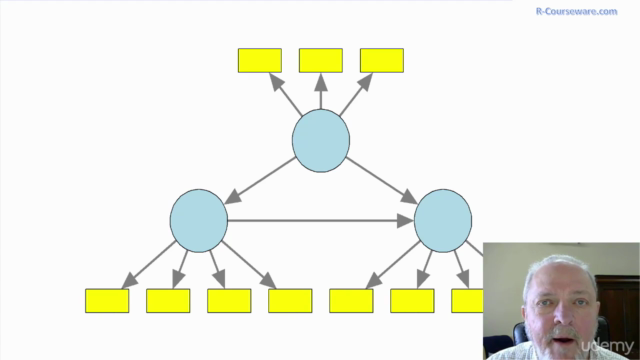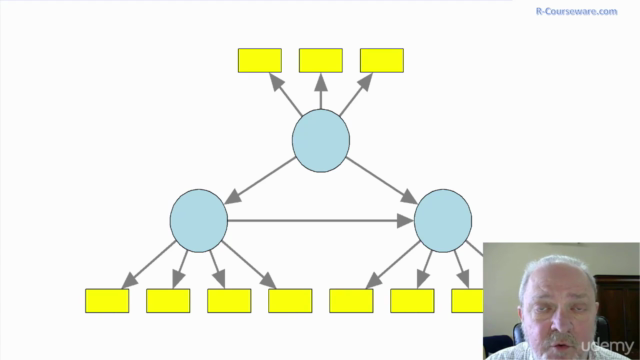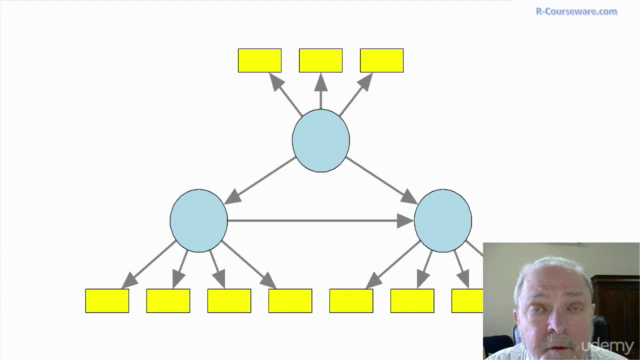Conceptual Foundations of PLS Path Modeling

Why take this course?
🎓 Course Title: Conceptual Foundations of PLS Path Modeling
Headline: Dive Deep into the Essentials of PLS Algorithm, Reliability & Validity, Bootstrapping, Mediation, and Moderation!
Course Overview:
Geoffrey Hubona, Ph.D. invites you to embark on a journey through the intricate world of Partial Least Squares (PLS) Path Modeling. Conceptual Foundations of PLS Path Modeling is meticulously crafted to provide a solid understanding of the fundamental concepts that form the bedrock of this powerful statistical technique.
🔑 Key Features of the Course:
- Comprehensive Introduction: Get to grips with the core principles of PLS path modeling through in-depth narrative lectures, enriched with PowerPoint slides and supplementary readings.
- Software-Agnostic: This course serves as an excellent precursor to any "hands-on" course focusing on specific PLS software tools like SmartPLS, WarpPLS, semPLS/plspm in R, ADANCO, or pls-gui.com.
- Conceptual Understanding: Achieve clarity on the difference between formative and reflective constructs, the assessment of reliability and validity, and the practical applications of bootstrapping and blindfolding techniques.
- Effect Estimation: Learn to estimate direct, indirect, total effects, as well as mediating and moderating influences within path models.
- Researcher-Centric: Tailored for graduate students, faculty, and researchers who require a clear and comprehensive grasp of the foundational concepts underlying PLS path modeling.
What You Will Learn:
Understanding the Mechanics:
- PLS Algorithm Explained: Discover how the PLS algorithm functions and its role in data analysis.
- Outer vs. Inner Models: Grasp the distinctions between the outer measurement model and the inner structural model.
- Construct Types: Delve into the fundamental differences between formative and reflective constructs.
Assessment Techniques:
- Reliability & Validity: Learn about the criteria used to assess reliability and validity in PLS path modeling.
- Bootstrapping and Blindfolding: Understand the significance of these techniques for statistical inference and model assessment.
Effect Estimation:
- Direct, Indirect, and Total Effects: Learn how to estimate and interpret effects within a PLS model.
- Mediation and Moderation: Discover how to detect and analyze mediating and moderating effects.
Interpreting Results:
- Path Coefficients, Weights, and Loadings: Learn what these values signify in the context of PLS path modeling.
- Latent Variable Scores: Understand the concept of latent variable scores and how they are derived.
- Variance Explained: Gain insights into the levels of variance explained by endogenous latent variables and what it means for your model.
Why Take This Course?
This course is an essential stepping stone for any researcher looking to deepen their understanding of PLS path modeling before diving into more advanced, "hands-on" applications. With a focus on conceptual foundations, you'll be well-equipped to apply these principles in real-world research scenarios.
Join us and elevate your research capabilities to new heights with Conceptual Foundations of PLS Path Modeling! 🌟
Course Gallery




Loading charts...